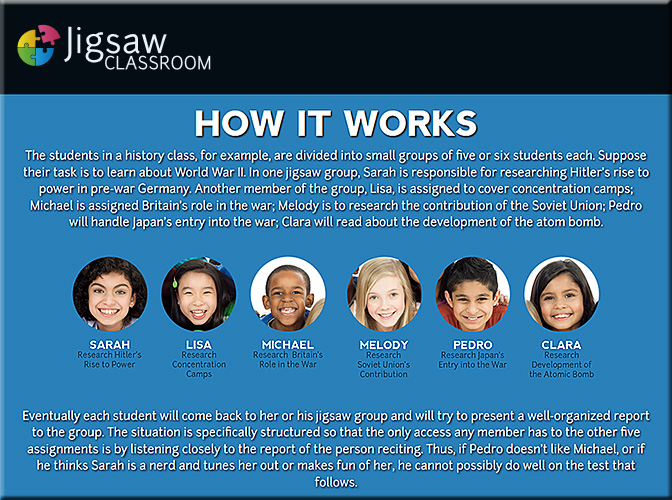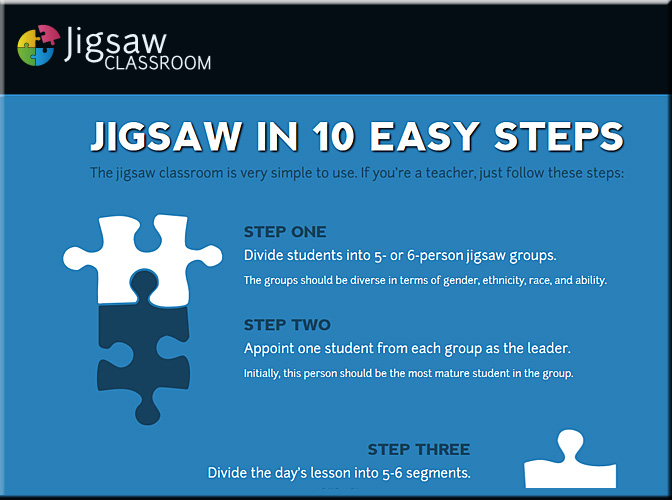From DSC:
Though the jigsaw technique has been around for decades, it came to my mind the other day as we recently built a highly-collaborative, experimental learning space at our college — some would call it an active learning-based classroom. There are 7 large displays throughout the space, with each display being backed up by Crestron-related hardware and software that allows the faculty member to control what’s appearing on each display. For example, the professor can take what is on Group #1’s display and send the content from that display throughout the classroom. Or they can display something from a document camera or something from their own laptop, iPad, or smartphone. Students can plug in their devices (BYOD) and connect to the displays via HDMI cables (Phase I) and wirelessly (Phase II).
I like this type of setup because it allows for students to quickly and efficiently contribute their own content and the results of their own research to a discussion. Groups can present their content throughout the space.
With that in mind, here are some resources re: the jigsaw classroom/technique.
The jigsaw technique is a method of organizing classroom activity that makes students dependent on each other to succeed. It breaks classes into groups and breaks assignments into pieces that the group assembles to complete the (jigsaw) puzzle. It was designed by social psychologist Elliot Aronson to help weaken racial cliques in forcibly integrated schools.
The technique splits classes into mixed groups to work on small problems that the group collates into a final outcome. For example, an in-class assignment is divided into topics. Students are then split into groups with one member assigned to each topic. Working individually, each student learns about his or her topic and presents it to their group. Next, students gather into groups divided by topic. Each member presents again to the topic group. In same-topic groups, students reconcile points of view and synthesize information. They create a final report. Finally, the original groups reconvene and listen to presentations from each member. The final presentations provide all group members with an understanding of their own material, as well as the findings that have emerged from topic-specific group discussion.











[…] learning and active learning. More discussions, case studies, problem-solving, use of small groups. The Jigsaw method was nicely modeled at the […]
[…] From DSC: Leveraging the power of the BYOD phenomenon along with the increased usage of active learning-based classrooms, if students could “upload” their content to such enormous screens, one could easily imagine some highly-engaging discussions — providing students with excellent opportunities to create and share their own content. Numerous windows and applications could be simultaneously displayed on such a video wall, providing/hosting some serious Jigsaw teaching techniques! […]